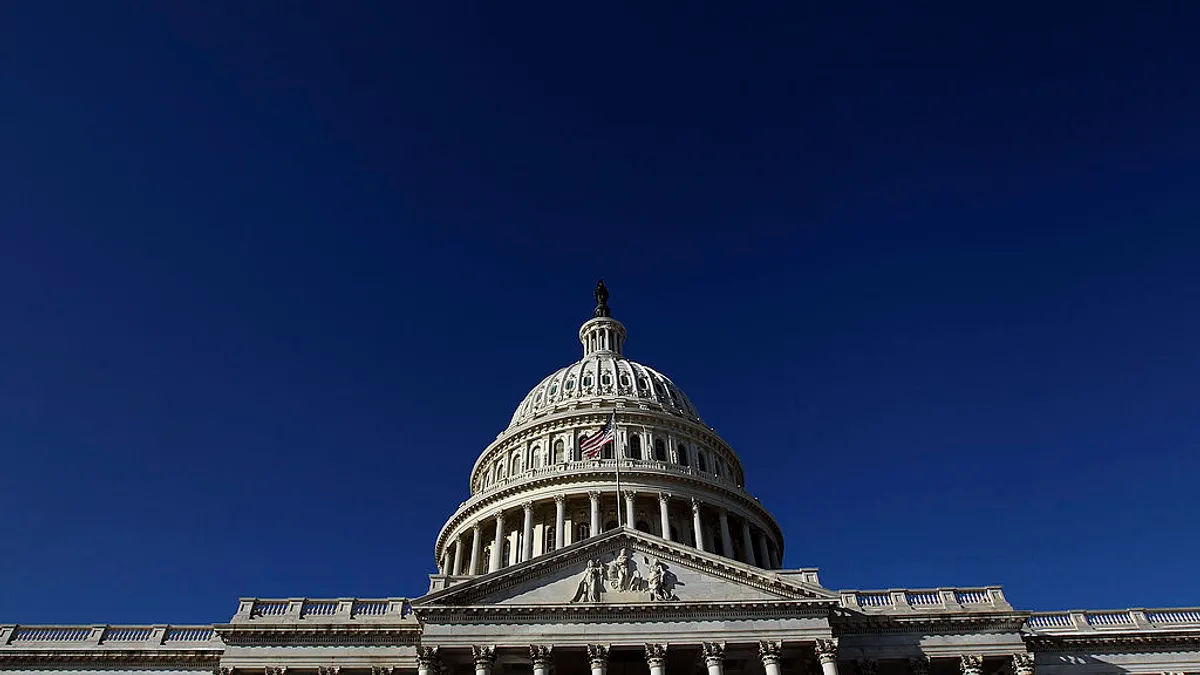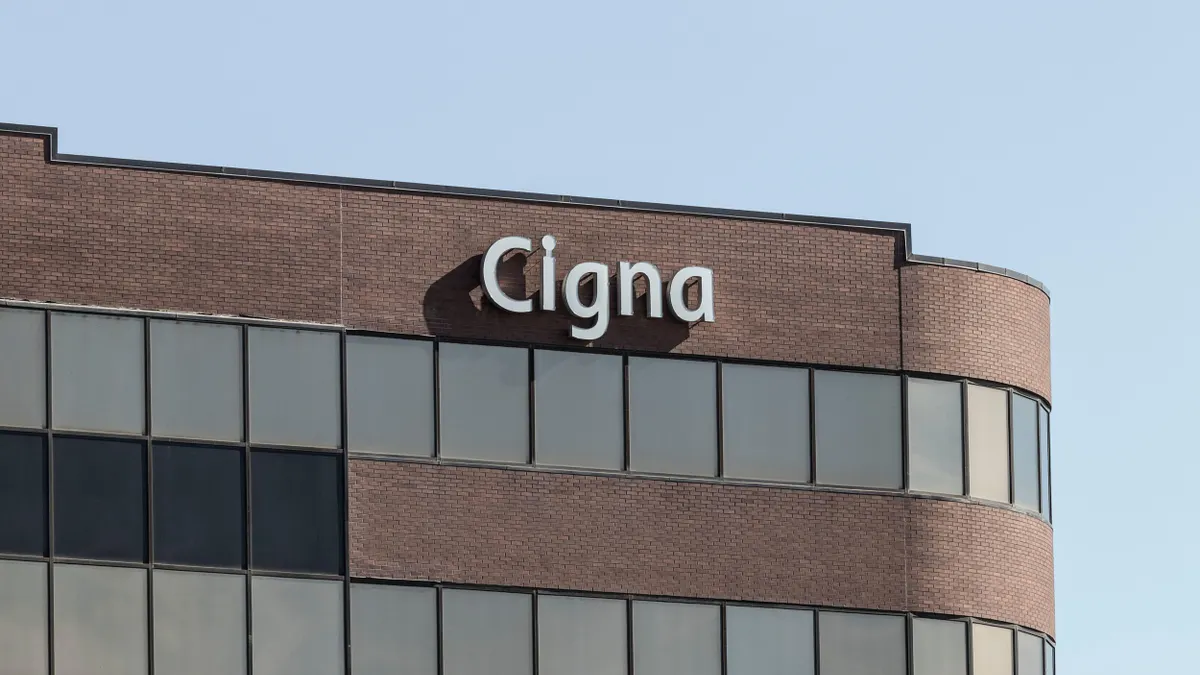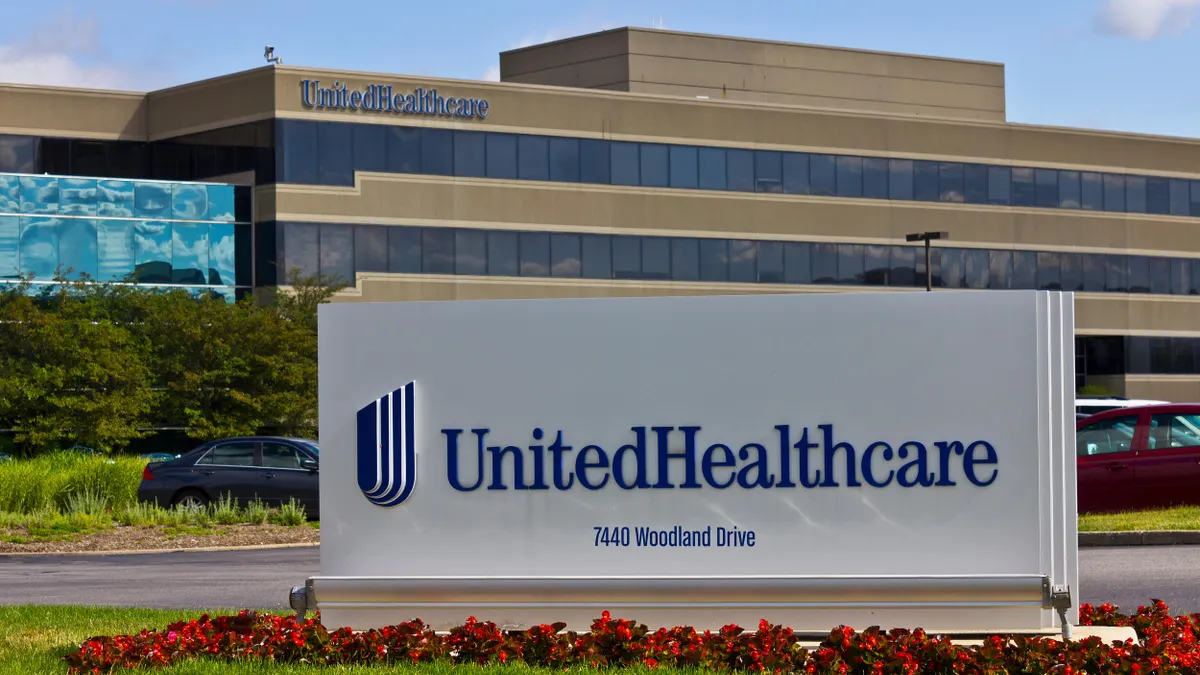Government programs continued to push down health insurers’ profitability in the third quarter, even as executives promised investors they’ve charted a reliable course to margin improvement. But those promises should be taken with a grain of salt, given the pernicious cost pressures facing Medicare, Medicaid and the Affordable Care Act, experts say.
The average operating margin of the seven major publicly traded payers dropped to just 0.5% in the third quarter, compared to 3% in the same period last year, according to a Healthcare Dive review of financial documents.
Taking out Cigna, which doesn’t provide insurance in government programs and enjoyed comfortable profits in the quarter, the group posted an average operating margin of -1.4%, compared to 2.2% same time last year. That’s despite major revenue increases as payers hiked plan premiums to try and cover higher costs.
“I would characterize the market as continuing to be challenging for health plans,” said Alexis Levy, a senior partner at consultancy Chartis’ payer advisory practice HealthScape Advisors.
In Medicaid, states resuming eligibility checks after the COVID-19 pandemic generally left sicker individuals in managed care companies’ rosters, and payment updates haven’t been robust enough to cover the trend.
ACA enrollees are also using more medical care and that medical care is becoming more expensive. It’s the same story in MA — though, the privatized Medicare plans are facing a one-two punch as higher medical costs coincide with Biden-era regulatory changes that have made it trickier for payers to increase their government reimbursement.
These issues bubbled up at differing levels of severity for different payers in the quarter, depending on their business mixes. For example, UnitedHealth’s insurance arm UnitedHealthcare — the largest private insurer in the country — gained more MA members than it wanted coming into 2025, and it’s had trouble digesting their costs; while Molina, a smaller payer with an outsized presence in government programs, couldn’t get a handle on elevated spending in Medicaid and the ACA exchanges.
But overall, “medical cost management continues to be a common theme,” Levy said — and it sent profitability way down.
UnitedHealthcare’s income from operations was down more than half compared to the same time last year, though it was still the highest of any insurer in the quarter at $1.8 billion.
Molina and Elevance’s insurance division both saw their operating income shrink threefold year over year. Meanwhile, Centene posted a drastic operating loss in the quarter of almost $7 billion due to massive impairment charge meant to reflect the company’s waning value.
CVS’ Aetna and Humana stood apart. Both companies’ insurance divisions benefited from favorable year-over-year comparisons after they were slammed by a tsunami of higher MA spending in the third quarter of 2024. As such, Aetna and Humana slashed their Medicare businesses coming into 2025 — decisions that have borne fruit by insulating them from the worst of higher costs hitting peers now.
In the third quarter, CVS’ insurance division climbed back into profitability after a massive loss in the third quarter of 2024.
Meanwhile, Humana curbed the dip in its operating margin to just 0.2 percentage points year over year, the least drastic decrease of its peers that saw margins fall.
Insurance profits shrunk for all major payers except for CVS and Cigna
But the industry won’t be in a tough spot for long, if you trust insurance executives. CEOs, CFOs and COOs spent third quarter earnings calls acknowledging the difficult environment while pledging to turn around margins soon — a common refrain over the past year as insurers have tried to finagle their way back into Wall Street’s good graces.
The companies say that states will continue to increase Medicaid rates as time goes on and there’s more evidence of spiking medical spending. As for their MA and ACA businesses, payers are exiting unprofitable counties, cutting unprofitable plans and curbing certain benefits to make plans more profitable in 2026 — even if that leads to significant member disruption.
UnitedHealthcare is on track for “solid earnings growth” in 2026 in part due to “more prudent pricing,” UnitedHealth CEO Stephen Hemsley said in the company’s call Oct. 28.
Centene expects its Medicaid margins to be flat next year, while its ACA business will see “meaningful margin improvement in 2026,” CEO Sarah London said one day later.
Aetna’s margin recovery should continue into 2026, President Steve Nelson said the same day. Meanwhile, Humana CFO Celeste Mellet said she was confident that the company’s MA margins should improve next year on the company’s call early November.
“Based on all the work that we did going into [open enrollment] in terms of our product design and our channel mix, we are happy with the margin we’re seeing,” Mellet said.
As for Elevance, though the Indianapolis-based payer expects its Medicaid margins to drop next year as spending outpaces state rate updates, the company feels “good” about improving its MA profitability, according to Felicia Norwood, Elevance’s head of government health benefits.
Yet it’s hard to know how successful insurers’ turnaround plans will be, according to Levy. The companies haven’t really been able to convince Wall Street, despite three quarters to do so.
UnitedHealth, Humana, Elevance and Molina are trading at their lowest levels since the early days of the coronavirus pandemic, while Centene is trading at its lowest level since 2017.
Overall, the health insurance industry’s stocks are down an average of 19% year to date, bucking improvement in the larger S&P 500, according to Yahoo Finance.
In addition, insurers are staring down significant market volatility next year, especially in the ACA exchanges. Despite a government shutdown over the debate, Congress appears poised to allow more generous subsidies for ACA plans to expire at the end of 2025. The loss of the subsidies would cause millions of Americans to face higher premiums, which insurers expect will cause healthier individuals to eschew insurance entirely — leaving them with sicker populations in an already high-acuity market.
As for MA, insurers are still struggling to calibrate their plans with regulatory changes, like the transition to a new risk model and shifting star ratings requirements. Insurers are still trying to figure out how to be profitable within that framework — further exiting plans, reducing service areas, trimming benefits and prioritizing plan designs that give them more control over costs for 2026.
It’s “hard to predict” whether those actions will be successful, Levy said. Plans with heavy government focuses “have to find a way to make these programs financially sustainable,” she added. The third quarter suggests they haven’t quite done that yet.























